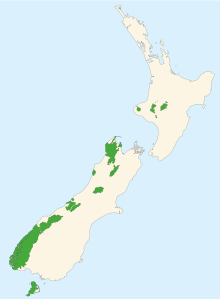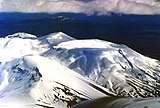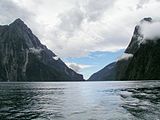
Back Lis Taman Nasional ring Selandia Anyar BAN Nationalparks in Neuseeland German Kategooria:Uus-Meremaa rahvuspargid Estonian Parcs nationaux de Nouvelle-Zélande French Parques Nacionais de Nova Zelandia Galician פארקים לאומיים בניו זילנד HE Új-Zéland nemzeti parkjainak listája Hungarian Þjóðgarðar á Nýja-Sjálandi Icelandic Parchi nazionali della Nuova Zelanda Italian ニュージーランドの国立公園 Japanese


The national parks of New Zealand are protected natural areas administered by the Department of Conservation (DOC). The first national parks established in the country were all focused on mountain scenery. Since the 1980s the focus has been on developing a more diverse representation of New Zealand landscapes.[1] The parks are all culturally significant and many also contain historic features.[2] Tongariro National Park is one of the World Heritage Sites that are of both cultural and natural significance, while four of the South Island national parks form Te Wahipounamu, another World Heritage Site. There are currently 13 national parks; a 14th, Te Urewera National Park, was disestablished in 2014.
The national parks are administered by the Department of Conservation "for the benefit, use, and enjoyment of the public".[3] They are popular tourist destinations, with three-tenths of overseas tourists visiting at least one national park during their stay in New Zealand.[4]
- ^ "National Parks Act 1980: DOC's role". doc.govt.nz. Department of Conservation. Retrieved 14 August 2010.
- ^ "5. Historical and Cultural Heritage: General Policy for National Parks". doc.govt.nz. Department of Conservation. Retrieved 14 August 2010.
- ^ "8. Benefit, Use and Enjoyment of the Public: General Policy for National Parks". doc.govt.nz. Department of Conservation. Archived from the original on 15 May 2010. Retrieved 14 August 2010.
- ^ "International visitor numbers to larger national parks: Visitor statistics and research". doc.govt.nz. Department of Conservation. Retrieved 14 August 2010.


